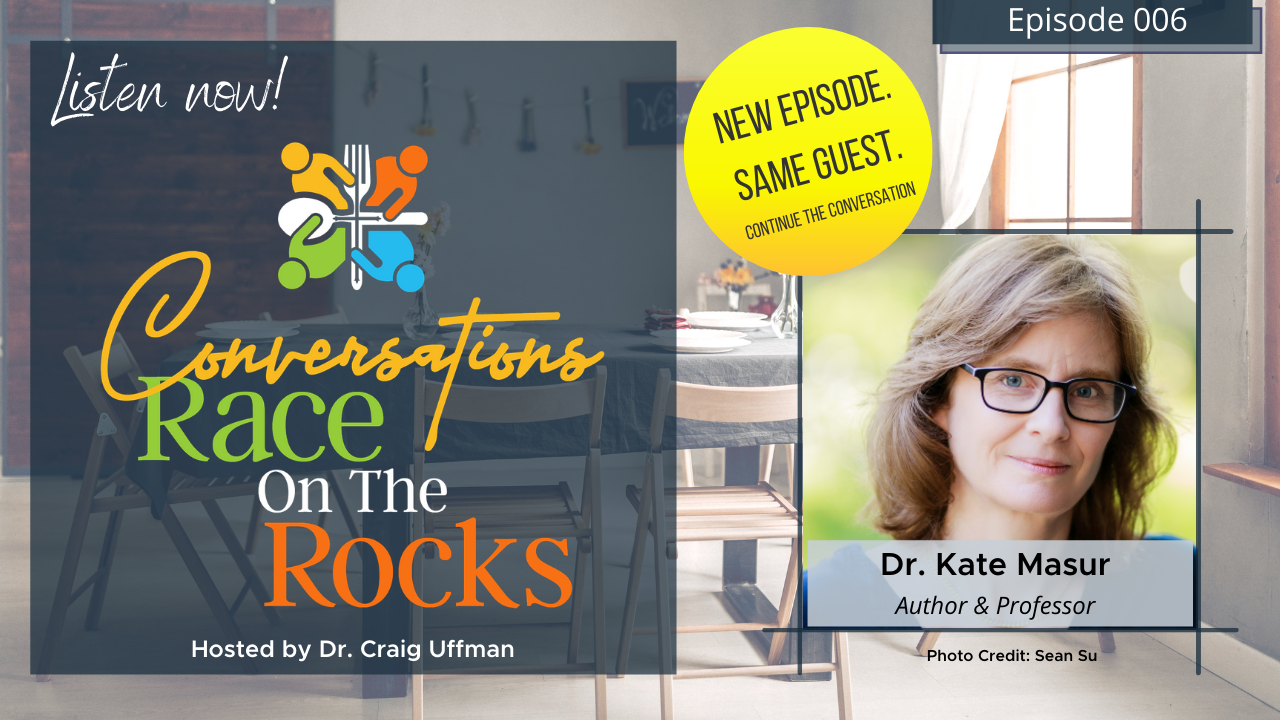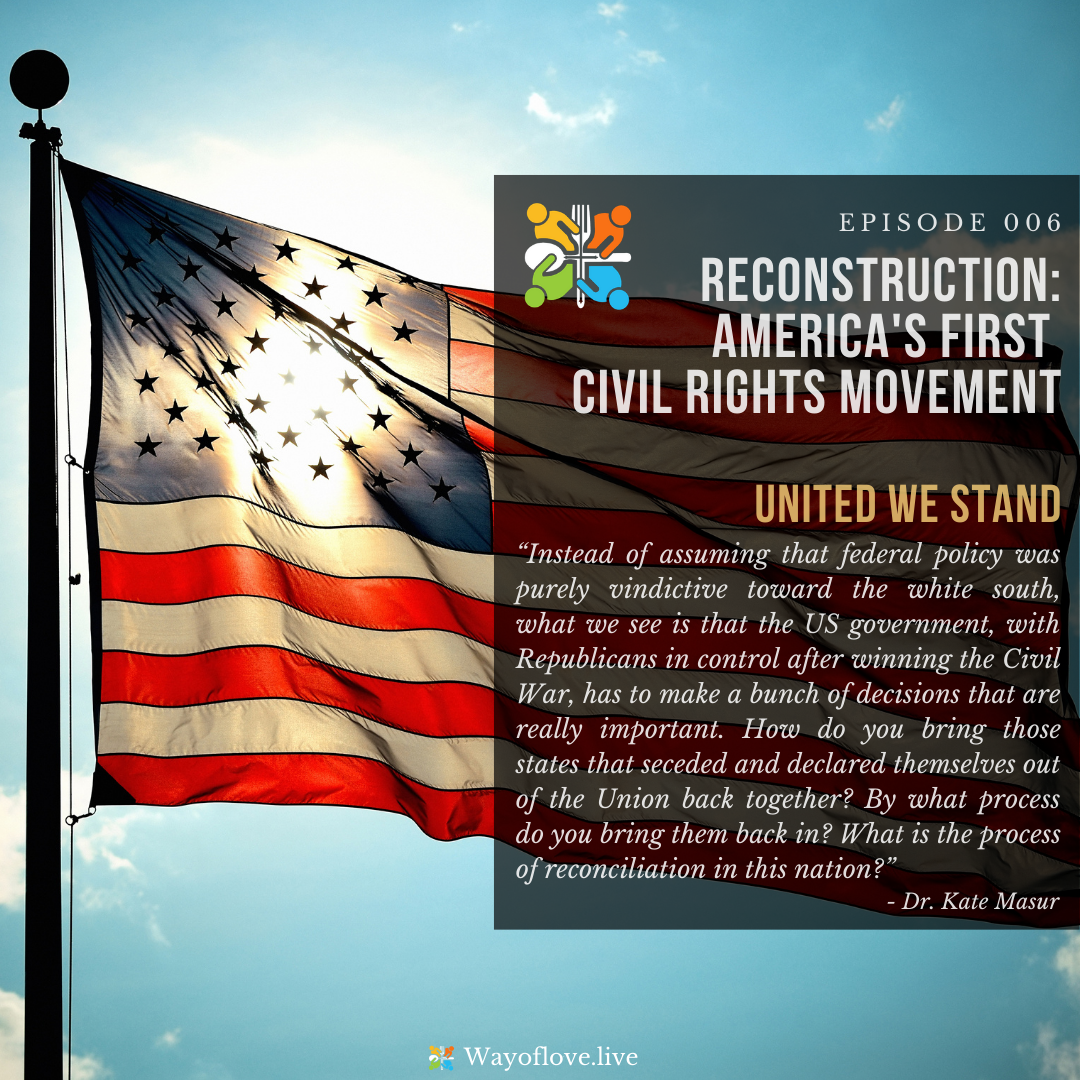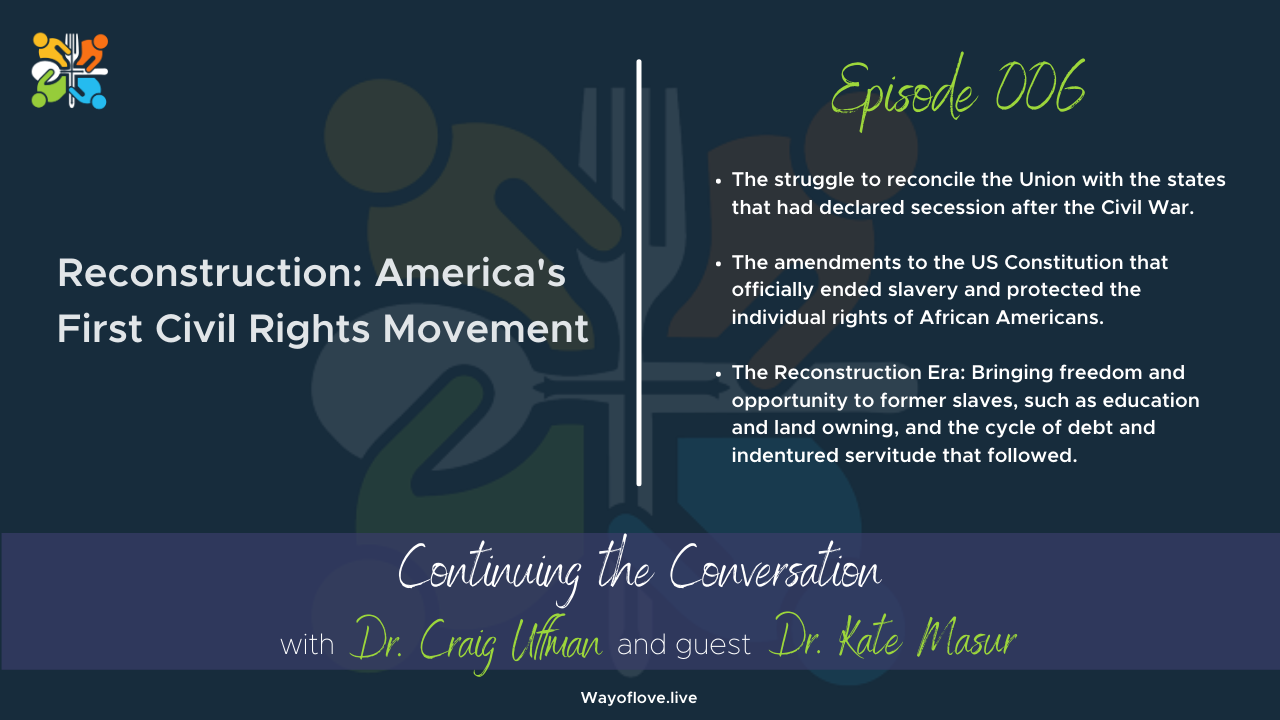“Reconstruction was a period of tremendous change. You can imagine, finally, people had access to a kind of freedom that they had been wanting for generations during slavery.” - Dr. Kate Masur
Listen now on Spotify, Apple Podcasts, Google Podcasts, Stitcher and more!

In our last episode, Dr. Kate Masur reminded us of important parts of the story of the American Civil War that continues to shape our racial topography today. In today’s episode, we’ll pick up where we left off and remember how we went from the jubilation that arose when Lincoln liberated those who were enslaved to the darkness of our Jim Crow Era.
Again, our guest today is Dr. Kate Masur. Kate is a history professor at Northwestern University. Most of her research investigates how Americans, north and south, grappled with the end of slavery and associated questions of racial equality. Her most recent book is Until Justice Be Done: America’s First Civil Rights Movement, from the Revolution to Reconstruction, which will be published in March of 2021.
Questions for Clergy and Other Group Leaders
- What was Reconstruction? What did the US government — then dominated by Republicans — try to do during Reconstruction?
- What were the Reconstruction Amendments (13th, 14th, 15th) and why were they important?
- What did southern African Americans do during Reconstruction?
- How did the practices of peonage and sharecropping and black codes functioned to limit black economic mobility and ensured cheap labor for the plantation economy after the war?
- What was the original Ku Klux Klan and what did it do?
- Why didn’t Reconstruction work out? Who tried to subvert it, and why/how were they successful?
- How did the Supreme Court play a role in enabling the rise of Jim Crow laws?
- How did the practice of using convict labor in the post-Civil War south serve as a means of repression and intimidation?

Show Notes
- [2:27] - Dr. Uffman shares the story that he was taught through history books in high school regarding Reconstruction.
- [3:48] - Dr. Masur confirms that this time period has been taught as a time of the greatest shame in American history but clarifies that the stories used to teach that information were a retrospective narrative erected to support Jim Crow.
- [4:19] - These stories supported the belief that the white south needed to take back control of their internal affairs and Dr. Masur explains that whites perpetuated the myth that African Americans needed time to adjust before participating fully in leadership of communities.
- [5:21] - After winning the Civil War, the US government with Republicans in control had to make very important decisions. Kate describes the difficulty of reconciliation between the Union and the states that previously declared their secession.
- [6:18] - One of the first things the government did was to add amendments to the US Constitution to formally and officially end slavery. Dr. Masur explains the importance of these amendments in protecting individual rights.
- [8:09] - The federal government made sure that African American men were given the right to vote and this was enforced with military presence in the south. Kate explains that this is where the myth of “white south humiliation” came from.
- [9:11] - The way that historians see Reconstruction now is this is actually the first time, and the only time until the Civil Rights era, that the US really tried to establish itself as a multi-racial democracy.
- [10:07] - Dr. Masur describes the loophole, emphasized in the movie, 13th, in the thirteenth amendment that states that if you are convicted of a crime you can then be enslaved and not allowed to vote.
- [11:49] - This was not seen as a way to force people back into slavery, but Dr. Masur points out that they did not predict mass incarceration that arose in the United States.
- [13:52] - William T. Sherman marched through Georgia and met with 20 African American leaders in Savannah to discuss what the formerly enslaved people in the area needed to transition after their liberation. The leaders said that they wanted their own land and the capacity to educate their children, and this famous conversation is where we first hear the phrase, “40 acres and a mule.”
- [15:07] - There is a debate during Reconstruction about whether the government would go so far as to confiscate the land of slave owners and distribute it among former slaves. But this was actually a radical position that never came close to passing.
- [16:18] - Reconstruction was a period of tremendous change. Former slaves now had a kind of freedom that they had been wanting for generations and now had to figure out where to live and how to sustain a livelihood.
- [17:13] - During this time, many black people also took the opportunity to search for lost loved ones. They would put advertisements in newspapers looking for family members that had been sold.
- [17:44] - As Republicans took control, they actually created the south’s first public education system. African Americans could also now form their own churches.
- [18:37] - By 1867, African Americans were also joining the Republican party, casting votes, and considering running for office. Kate explains that there were about 2,000 African American men who held office in the south during Reconstruction.
- [20:37] - Dr. Uffman makes a connection between the desires of African Americans to have access to education during this time and similar issues that we see in the 20th century.
- [21:29] - Dr. Masur explains how it is possible to have separation and integration in American institutions and how this was very difficult for white people to understand. This is how many African Americans saw the world. They didn’t necessarily always want their children to be educated in institutions led by white people, but they wanted the same access to opportunity.
- [22:57] - A common misunderstanding around this time period is that white southerners didn’t want African Americans around anymore because they could no longer exploit them. But in reality, plantation owners needed their labor and so created new ways to prevent them from leaving the plantation economy..
- [24:15] - Kate shares an example of how white landowners in Mississippi tried to make it illegal for African Americans to own land in an attempt to keep them on the plantations. This was overturned, but there were many instances where white southerners did anything they could to keep their labor force where they were.
- [26:07] - Dr. Uffman compares the examples that Dr. Masur gives to an event in the Old Testament.
- [27:22] - There were vagrancy and anti-enticement laws set up during this time as well that essentially caused arrests for no real reason. Dr. Masur describes some of these and how they even affected employment.
- [28:20] - There were tax laws that put very heavy taxes on small land owners and they couldn’t pay. Dr. Masur also describes other financial mechanisms for making sure Blacks did not do well economically and so establish independence from the plantation economy.
- [29:39] - Dr. Masur defines peonage as a more extreme version of what she has been discussing where landowners keep people so far in debt that they are immobilized.
- [30:41] - Times were very hard for both black and white southerners who were trying to make it in the south because of cotton prices declining. Large companies were buying out smaller farmers who were struggling.
- [32:46] - Dr. Uffman describes the never ending cycle of debt for many African Americans as a way to lock them into the land of the white plantation owner.
- [34:18] - When law enforcement is built to support white landowners, where would African Americans go if they found themselves in this cycle of debt and indentured servitude? The innovations of the thirteenth, fourteenth, and fifteenth amendment is important here but they were not being enforced.
- [35:48] - “You see this long line from Reconstruction establishing the possibility for the first time that there could be a level of federal support for individual and civil rights and the ups and downs, mostly downs until the 1950s, of what happens after that.” - Dr. Kate Masur
Links and Resources
Connect with Dr. Craig Uffman:
More from Dr. Kate Masur:
- About Kate Masur - Northwestern University
- Kate Masur on Twitter
- Until Justice Be Done: America’s First Civil Rights Movement From Revolution to Reconstruction by Kate Masur
- More books authored by Kate Masur
- “Yes, Wednesday’s attempted insurrection is who we are” Washington Post article by Kate Masur and Gregory Downs

